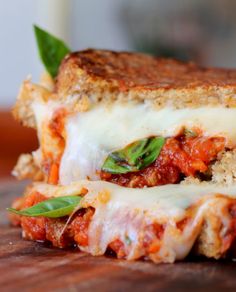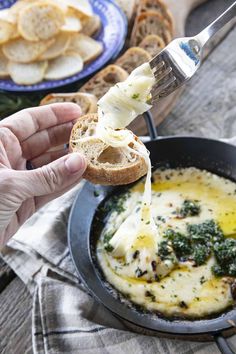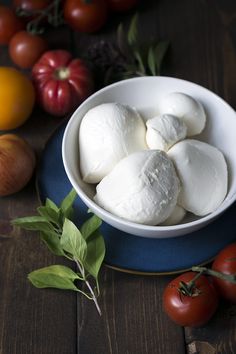Provolone or Mozzerella: Which Is Better?

Most foodies agree that cheese is an all-time favorite. Cheese, which is made from milk and comes in various flavors, has become a genuine culinary best friend.
Let’s start with the two most frequent varieties of cheese in our kitchens: Provolone and Mozzarella. I know they’re in the same food group, but these cheeses aren’t the same and are entirely distinct.
Provolone Cheese is a semi-hard Italian cheese with a characteristic peppery flavor, while Mozzarella Cheese is a semi-soft Southern Italian cheese with a neutral and flexible texture.
How Are They Made?
We’re all familiar with the process of making cheese. It is derived mainly from animal milk, typically a cow or goat milk. Even though it all started with milk, did you know that the two forms of cheese, Provolone, and Mozzarella, are processed differently? Let’s take a closer look.
Provolone Cheese

Provolone cheese originated in Casilli, near Vesuvius, according to legend. Provolone, “big provolone,” was developed in the nineteenth century. This cheese is currently widely available throughout Northern Italy. The cheese is made by:
Making fresh cow’s milk.
The milk is heated until curds of milk begin to form.
After that, the curds are broken up, drained, and simmered for another 5-8 hours.
Large chunks of curd are chopped into the required sizes.
The fabric is then strained and stretched by hand until it has a stringy and rubbery quality.
The stretchable molded provolone blocks are then immersed in a moderately salted brine.
Provolone is matured for three to four months until it becomes a semi-firm, malleable cheese with a creamy, smooth, and nutty taste. A drier and harder texture may occur from aging the cheese for an extended period.
This cheese is classified as “Pasta Filata” or “Stretched Curd.”
Mozzarella Cheese

Mozzarella cheese was formed from the term “Mozza,” which means “cut” in the Neapolitan dialect used in Campania. The Monastery of Saint Lorenzo has been making cheese since the early 12th century. The cheese is now extensively made by the European Union using its original traditional recipe.
The process involves:
- A thermophilic bacterium is generated from a whey starter when fresh buffalo’s milk is extracted (other varieties employ cow’s, sheep’s, and goat’s milk).
- After that, rennet is added to the milk to cause it to coagulate.
- Following coagulation, the curd is chopped and goes through a process known as “healing.”
- After healing, the curds are agitated, boiled, and then drained to separate them from the whey.
- The cheese is additionally stretched and kneaded by hand to obtain a smooth and lustrous texture.
- The material was then shaped into cylinder-like forms with a rubbery, semi-soft feel.
Mozzarella Cheese, like Provolone, is made using the same procedure, pasta.
However, unlike Provolone, Mozzarella cheese has a higher moisture content since it was not aged. Fresh Mozzarella is usually eaten on the same day or stored in a brine mixture for a week.
Which Cheese Has the Highest Nutritious Value?
Understandably, specific food categories compete for nutritional health advantages other than flavor and enjoyment. Cheese is no different. Let’s look at how the nutritional value of these two varieties of cheese differs.
Every 100 grams of Provolone Cheese contains 352 calories. It contains a total fat proportion of 27 g, a cholesterol percentage of 69 mg, a sodium percentage of 876 mg, a potassium percentage of 138 mg, a carbohydrate percentage of 2.1g, a protein percentage of 26 g, a calcium percentage of 75%, a cobalamin percentage of 25%, and a vitamin A percentage of 17%.
One hundred grams of Mozzarella Cheese contains 280 calories. It has a total fat percentage of 17 g, a cholesterol proportion of 54 mg, a sodium percentage of 16 mg, a potassium percentage of 95 mg, a carbohydrate percentage of 3.1 g, a protein percentage of 28 g, a calcium percentage of 73%, a cobalamin percentage of 14%, and a vitamin A percentage of 10%.
According to the facts shown above, Provolone has more calories than Mozzarella. If you’re attempting to lose weight and eat a healthy diet, Mozzarella is a terrific option. Mozzarella also has lower fat, cholesterol, and salt level. Furthermore, it has more protein, which is ideal for muscular building.
Provolone is not the healthiest option because of its high salt and fat content. Nonetheless, it has more calcium, cobalamin, and vitamin A. If taken in moderation, I don’t believe it poses a significant health risk.
Can You Substitute Provolone Cheese to Mozzarella Cheese?
Yes. You may easily switch one for the other depending on the recipe.
Even though they are classified as Pasta Filata, they have the same stretched and rubbery feel. However, it is worth noting that Provolone is tougher than Mozzarella.
So, if you try to substitute Mozzarella Cheese for Provolone Cheese when preparing pizza, anticipate your pizza slice to be more gooey and stringy.
Because Mozzarella has a softer flavor, you may need to add additional salty toppings or meats to your pizza. Because Provolone is more savory, using fewer salty toppings on your pizza isn’t essential.
It’s the same with other foods. You may use the same procedure for preparing pizza as you would for using both types of cheese in other recipes.
Can You Mix Both Cheese in One Dish?
Without a doubt! You may even combine four different varieties of cheese at once. Do you remember our favorite four-cheese pizza? If you’re a huge cheese fan, you may combine the two while preparing pizzas, mac, and cheese, or even cheese soups.
I’ll include a perfect recipe after this essay. So please bear with me to the very end.
Other Cheese Alternatives
Mozzarella and Provolone Cheese is not the only sort of cheese that may be used in your recipes. Here are some more cheese alternatives you may use if you don’t have either of the two.
Cheddar Cheese is another popular kind for its low cost and strong flavor. It’s ideal for pizzas and savory pies. Although it is not as stretchy as Provolone or Mozzarella, it offers more bright color and flavor to any meal.
Goat Cheese: A flavorful soft cheese that helps to balance off hot recipes. Goat’s cheese may not melt as quickly as Provolone or Mozzarella, but it softens wonderfully in the oven. To make a savory pizza slice, use this as a topping while creating pizzas.
Gruyere Cheese:This semi-soft cheese has a savory flavor that may be utilized in various cuisines. Because Gruyere cheese does not blister easily, it is also used in pizzas and other baked meals. It pairs nicely with potatoes, processed meats, and peppers because of its nutty, sweet, and savory flavor.
Gouda: Younger gouda cheese is ideal for melting. It’s also an excellent substitute because of its milder flavor and chewy texture. Aside from pizza and pasta, it pairs nicely with sandwiches, biscuits, and charcuterie.











